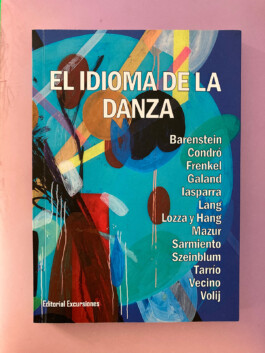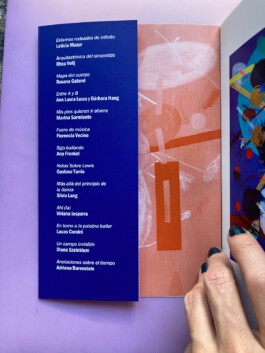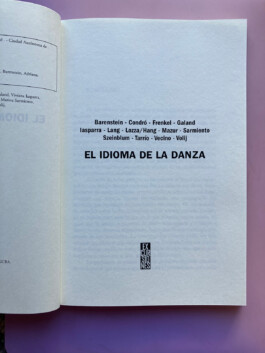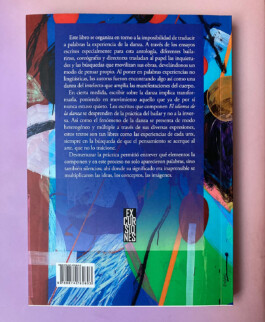Entre A y B
by Ana Laura Lozza & Bárbara Hang
This text gives an account of our collaborative choreographic practice. It was commissioned for the anthology of texts on dance El idioma de la danza.
"How can we imagine a choreographic doing that goes beyond the resulting works, beyond distances and times dictated by personal economies, beyond individual skills or talents whether "natural" or "acquired", "appropriated" or "abandoned", being two? What kind of collaboration resists the passage of time, the individualistic imperative that celebrates distinctive artistic authorship, the collaborationist imperative that imposes constant temporary partnerships at any cost regardless of having common artistic, ethical or social interests? What kind of bond manages to resist the changing lives? Can we answer these questions? Perhaps, they are simply questions we want to pose. Questions that don’t find answers and come back as questions, each time a little bit changed. However, in essence -and we don't really like this word- they can be summarized into one question: how to work together. And yet another question already emerges from it: how to write together about how to work together."
read the text here (Spanish)





El idioma de la danza
With contributions by Adriana Barenstein, Lucas Condró, Ana Frenkel, Roxana Galand, Viviana Iasparra, Silvio Lang, Ana Laura Lozza & Bárbara Hang, Leticia Mazur, Marina Sarmiento, Diana Szeinblum, Gustavo Tarrío, Florencia Vecino and Rhea Volij.
Edited by Sol Echevarría and Nurit Kasztelan
Ed. Excursiones, 2020
Buenos Aires
Entre A y B
by Ana Laura Lozza & Bárbara Hang
This text gives an account of our collaborative choreographic practice. It was commissioned for the anthology of texts on dance El idioma de la danza.
"How can we imagine a choreographic doing that goes beyond the resulting works, beyond distances and times dictated by personal economies, beyond individual skills or talents whether "natural" or "acquired", "appropriated" or "abandoned", being two? What kind of collaboration resists the passage of time, the individualistic imperative that celebrates distinctive artistic authorship, the collaborationist imperative that imposes constant temporary partnerships at any cost regardless of having common artistic, ethical or social interests? What kind of bond manages to resist the changing lives? Can we answer these questions? Perhaps, they are simply questions we want to pose. Questions that don’t find answers and come back as questions, each time a little bit changed. However, in essence -and we don't really like this word- they can be summarized into one question: how to work together. And yet another question already emerges from it: how to write together about how to work together."
read the text here (Spanish)





El idioma de la danza
With contributions by Adriana Barenstein, Lucas Condró, Ana Frenkel, Roxana Galand, Viviana Iasparra, Silvio Lang, Ana Laura Lozza & Bárbara Hang, Leticia Mazur, Marina Sarmiento, Diana Szeinblum, Gustavo Tarrío, Florencia Vecino and Rhea Volij.
Edited by Sol Echevarría and Nurit Kasztelan
Ed. Excursiones, 2020
Buenos Aires